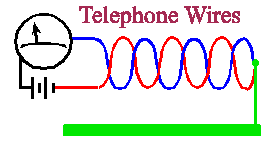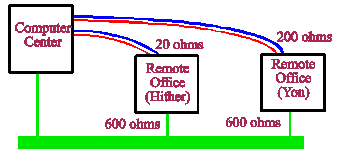Phones had dials in those days, but it was years before direct distance dialing, which is what we do today -- without dials. The telephone company (there was only one before the Big Divestiture) employed multitudes of long-distance operators, who took numbers and levied tolls by voice; they placed calls and listened for the requisite bells and gongs that signalled the depositing of coins. If the call did not go through, she (there were no males in those jobs) would press a button and the coins would be diverted from what was called the 'abbeyance box' and returned to the caller. Otherwise, when the call was completed and the caller had hung-up within the specified talking period, the toll would drop into the locked box inside the payphone. As each long distance connection was made, of course, the operator routinely dropped off the line to afford privacy to the conversation. What that villainous student did was simulate the effect of the operator pushing her release button to return the coins. Thus were free calls made to relatives and friends in distant cities -- once, as the story goes, to Pope Pius in the Vatican.
Current through that circuit energized a solenoid that held the coins as they were deposited. The operator's pushbutton broke the Phantom Circuit to return the coins. The student secretly modified one of the nearby phone booths, sawing through the earth-ground connection and installing a hidden button of his -- or her -- own. The sophisticated reader will know that such tampering won't work today, because all of the signalling takes place by means of coded tone-pairs over the voice channel in differential mode. The phantom circuit is no longer used. But then,... In the early sixties, a certain engineer was inspired by the student's story (if indeed 'inspiration' is the appropriate notion) to invent a legitimate solution to a design problem. In development at that time was a communications system for stock brokers. Computers were huge and far too expensive back then to be placed on desks. Dedicated telegraphic-like terminals were to be connected by leased lines to a computer located in the business district of a large western city ("Fresno?" goes the old Bob-and-Ray routine. "No, Los Angeles."). To secure the attention of the computer a broker in his or her remote office operated a key switch. The invention applied the Phantom Circuit to "seize the port" at the computer site. It worked like gangbusters.
|

 At the
computer site, a simple ohmmeter was used to measure
the "loop resistance" wire-to-wire and then the
"phantom ground" resistance referenced to electrical
"neutral" in the building basement.
At the
computer site, a simple ohmmeter was used to measure
the "loop resistance" wire-to-wire and then the
"phantom ground" resistance referenced to electrical
"neutral" in the building basement.  The
loop resistance measured 20 to 200 ohms depending on
the distance to the broker's office. But the Phantom Ground resistance
(net of the loop resistance) measured 600 ohms -- the
same no matter what the distance was. Thirty-five
years ago, one might have given that sentence an
exclamation point.
The
loop resistance measured 20 to 200 ohms depending on
the distance to the broker's office. But the Phantom Ground resistance
(net of the loop resistance) measured 600 ohms -- the
same no matter what the distance was. Thirty-five
years ago, one might have given that sentence an
exclamation point. 